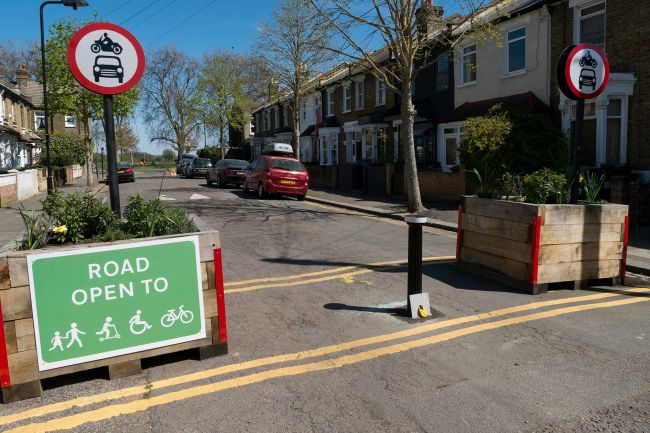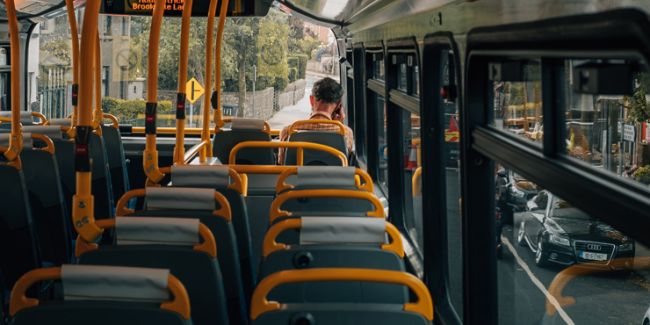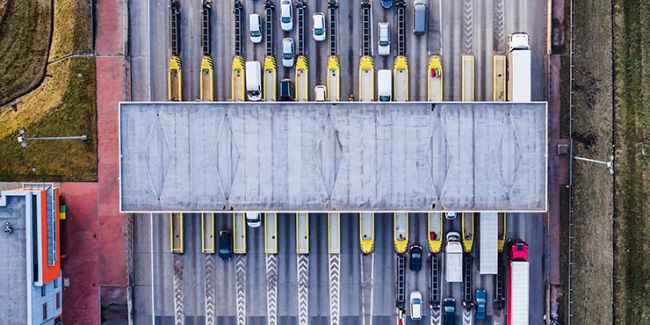Parking demand in the autonomous vehicles era
This series includes an in-depth review of potential outcomes, timings, and alternative futures.

Steer Davies Gleave and KPMG have teamed up for this three-part series that seeks to better understand the potential impacts of AVs on parking demand, location, operation, and revenues. This series includes an in-depth review of potential outcomes, timings, and alternative futures. Read the first article here.
The precise nature of the Autonomous Vehicle (AV) transformation will be directly influenced, among other things, by: the ownership model favored by users, be it shared or private, and the market acceptance of this new and continuously improving technology. The uncertainty surrounding these influencing factors makes predicting their impact on parking and transport demand a multi-faceted challenge.
While other articles have attempted to understand and model parking demand based on the shared ownership model, this article presents the impact of three ownership and market acceptance scenarios that may shape the future demand for parking in an AV world.
- Private Ownership
- Shared Ownership or Single Occupancy
- Shared Use, Multiple Occupancy
Why future ownership matters
Why will the ownership of AVs, whether private or of shared use, affect parking demand? If AVs simply replace the volume of privately-owned, non-autonomous vehicles on highways today, the demand for car parking may not change significantly in the future; the average car utilization today is 5 percent. As such, the number of vehicles on our highways, and the need to park them, would likely remain constant. There may, however, be potential to relocate car parks to cheaper land away from the city core, and possibly accommodate more vehicles in the same amount of space.
If we envision a ‘mobility-as-a-service’ or ‘fleet’ model of ownership – where users hire an AV to make a trip (either by themselves or through ride-sharing) and upon completion of that trip, the vehicle is hired by another user – the need for parking may be limited to the wait time between pick-ups. In this case, car parks may transform themselves into service centers where fleet vehicles are maintained and fuelled/charged in preparation for their next hire.
The reality is that we expect to see the coexistence of AV ownership patterns – with AVs privately-owned initially and shared increasingly by users who opt to hire AVs from fleets. It is also possible that private owners will surrender their cars when the car is not in use, encouraged by car manufacturers keen to maximize the owner’s return from a highly depreciating asset. Fleet companies will not be able to supply enough vehicles to service all potential demands, particularly in rural areas, and users underserved by fleets will want to own an AV to guarantee mobility.
But will we accept AVs?
The level of acceptance of AVs — and thus demand for parking — will vary by factors such as age, income, geography, level of mobility, generational culture, and cost. AVs will offer enhanced mobility to particular groups, such as those who are currently unable or unwilling to drive (the elderly, infirm, or those without driving licenses). Those users will be able to access services in a different way, and if they own the vehicle themselves, there may initially be an increase in the level of demand for parking to accommodate these ‘new’ road users.
Different demographic groups will accept AVs more willingly than others and be keener to ride-share. UberPool and Lyft Line, the rapidly expanding ride-share services, are popular with Generation Z and Millennials – who in general, are more accepting of shared transportation options than other demographic groups. In San Francisco and New York City, customers using Lyft Line already outstrip demand for single-occupancy Lyft vehicles. Varying levels of acceptance will mean that certain types of parking assets could be more vulnerable to change than others, for example, parking facilities on university campuses.
Will public policy hinder or support AVs
The public sector has the opportunity to determine where and how AVs shape our urban environment, promote social inclusion, directly influence the market acceptance of AVs, and limit the negative consequences of AVs on the transport network, for example by ensuring that AVs and public transport co-exist effectively to promote mobility.
It’s easy to imagine a future scenario where a city authority decides to enhance their urban realm by prohibiting car parking in the city core, immediately freeing up on-street car parking spaces and permitting the space to be used by pedestrians and cyclists. Or the public authority sees the potential for AVs to increase the capacity of congested highways into the city core.
Predicting the impact on parking
Predicting the impact of AVs is a multi-faceted challenge given the uncertainties surrounding potential ownership models, market acceptance, and the public policy response, as outlined above. Various studies have attempted to model the impact of AVs on parking demand considering only the shared ownership model. We are interested in understanding the impact of all three.
Therefore, we have chosen to present a qualitative review of future parking demand based on a set of three potential scenarios for worlds where AVs are: privately-owned; shared with single-occupancy; and shared with multiple occupancy. A summary of the potential impacts of each scenario on parking demand is presented in Table One.
Table one: The impact of AVs on parking: three scenarios
| Impact | Private (1) | Shared use, single occupancy (2) | Shared use, multiple occupancy (3) |
| Number of car parks | Equivalent to today, subject to whether vehicles can re-position themselves in different locations on the public road network | Lower than Scenario 1. Fewer vehicles require parking and duration of stay reduces | Significantly lower than Scenario 1. Significantly fewer vehicles require parking |
| Location | Basic autonomy will permit drop-off and parking, lots still need to be located near destination. Higher autonomy will allow drop-off at destination and parking located elsewhere | Car parks could be located in cheaper, out of town locations during periods of lower demand | Car parks located at key destinations with high demand to provide spare vehicles and servicing centers |
| Parking revenues | Same as today or greater | Reduced due to less time spent in car park and fewer parked vehicles | Significantly reduced due to less time in car park and significantly fewer parked vehicles |
| Type of facility | Same as today. Opportunity to widen service offer | Car parks transformed to become service centres and waiting areas until AV is requested by ‘user’ | |
| Operational capacity | Capacity optimised (more vehicles, same space) | Fewer spaces needed than Scenario 1 | Significantly fewer parking spaces needed than Scenario 1 |
| Rate of change/ implementation |
Gradual implementation of AV floors (e.g. one floor at a time) | Big bang (i.e. once Uber decide to do this it will happen quickly) | Subject to local market conditions and familiarity with ridesharing |
Concluding remarks
Where will the parking lots of the future be located? How much capacity will they need and what will their function be? As we have explored, the adopted ownership model and the acceptance of ride-sharing could have a significant impact on the answer to these questions. The impact of private ownership on parking will be limited, but if the shared ownership, multiple occupancy model takes off, the impact on parking demand will be enormous; more people will be transported in fewer vehicles that will rarely need to be parked. How parking industry stakeholders can prepare for the increasing adoption of AVs is explored further in Article Three.
Written by Anita Mauchan and James Long with co-author Andrea Holmes, Senior Consultant, KPMG Canada.
____________________________________________
KPMG is a global network of independent member firms offering audit, tax and advisory services. The firms work closely with clients, helping them to mitigate risks and grasp opportunities. Member firms' clients include business corporations, governments and public sector agencies and not-for-profit organizations. They look to KPMG for a consistent standard of service based on high order professional capabilities, industry insight and local knowledge.
















